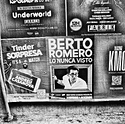Was that one of Sandy's workshops? I'd be very surprised if he was using that uncoated baryta. You might want to confirm with him exactly what was used. Any RC paper, including Adox, would be a good choice for learning the basics. RC paper is also handy for triaging problems, printing step wedges, for optimizing relief in some images. and makes a fine base for carbon tissue. You can print on both sides of RC photo paper, and you can even wash off an image and reuse the paper. Fix fiber paper as usual (fix, hypo clear, wash). RC is simpler -- I use an alkaline fixer for about 90 seconds, then a quick wash, squeegee and hang to dry. Don't forget: prints will be developed in hot water for at least 10 minutes, and keepers will be cleared (I use potassium metabisulfite) and washed. The photo paper I use most often is Ilford Multigrade IV FB Fiber Matte; I generally steer clear of glossy papers because I just don't like the look. Carbon printers spend a lot of time testing papers and sizing -- that's part of the fun.





